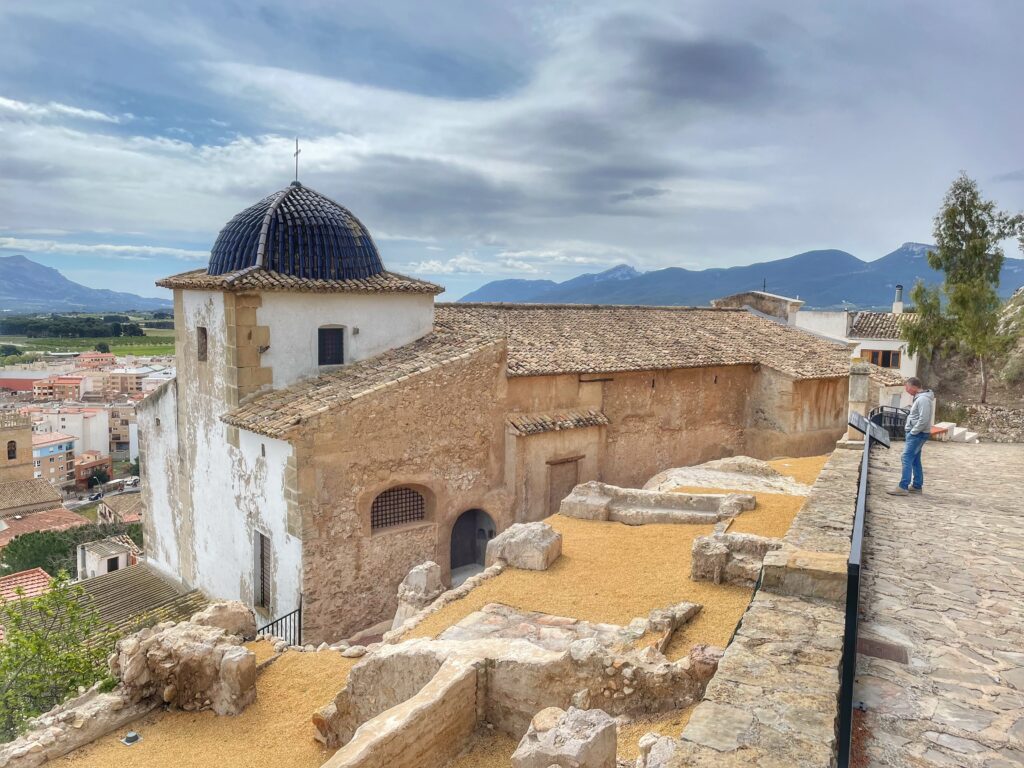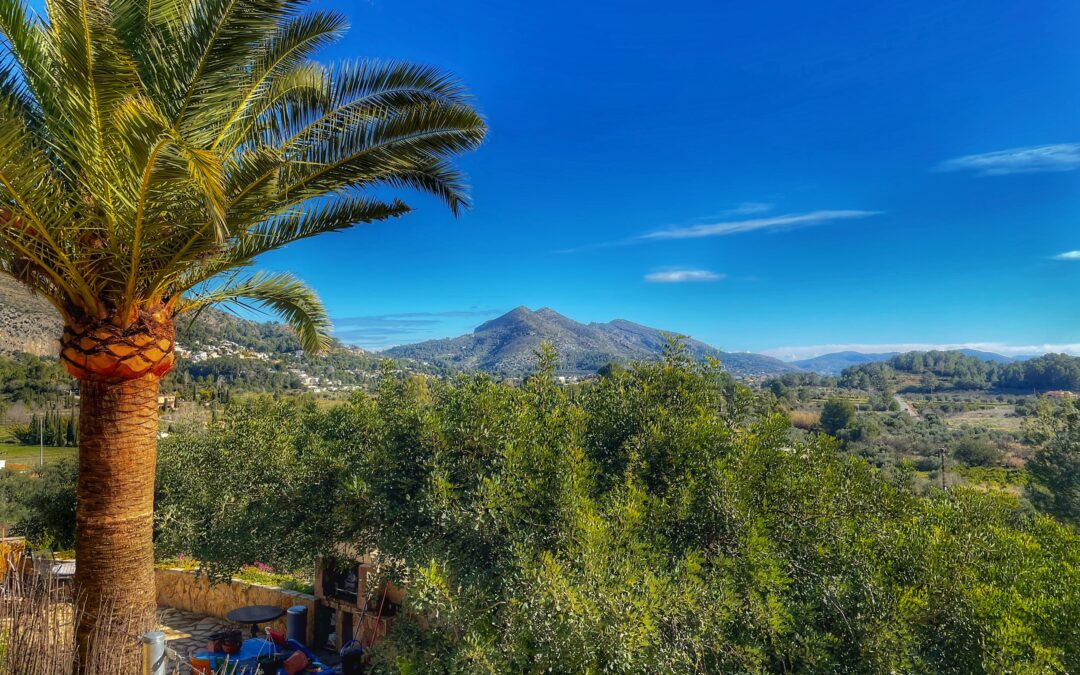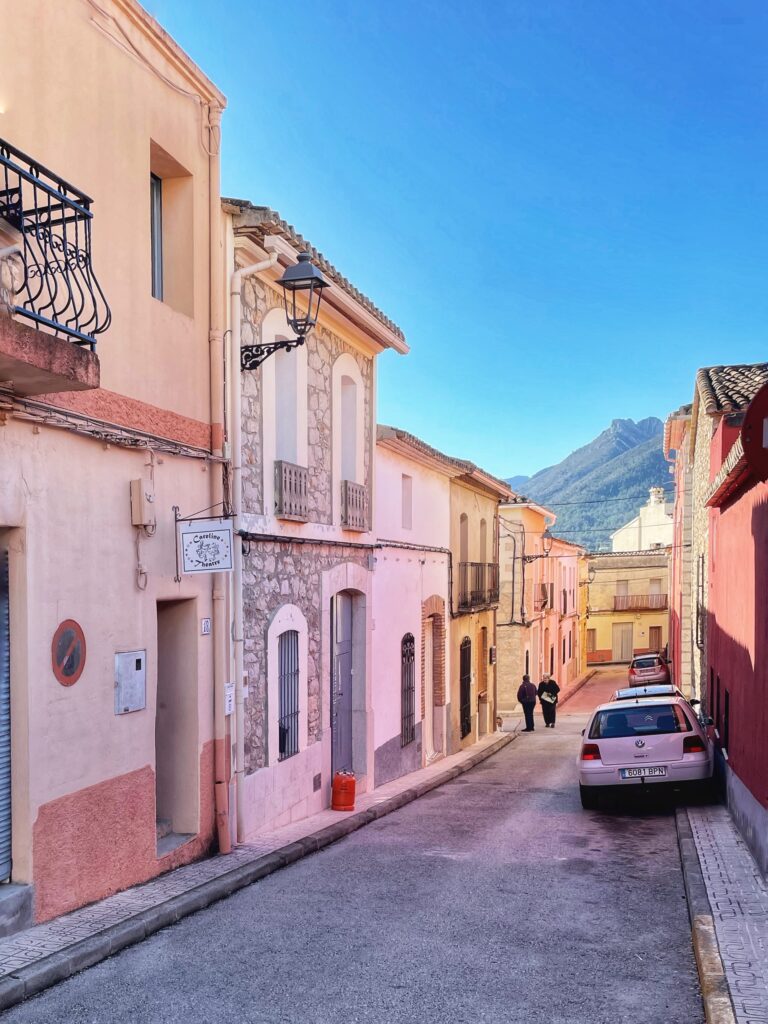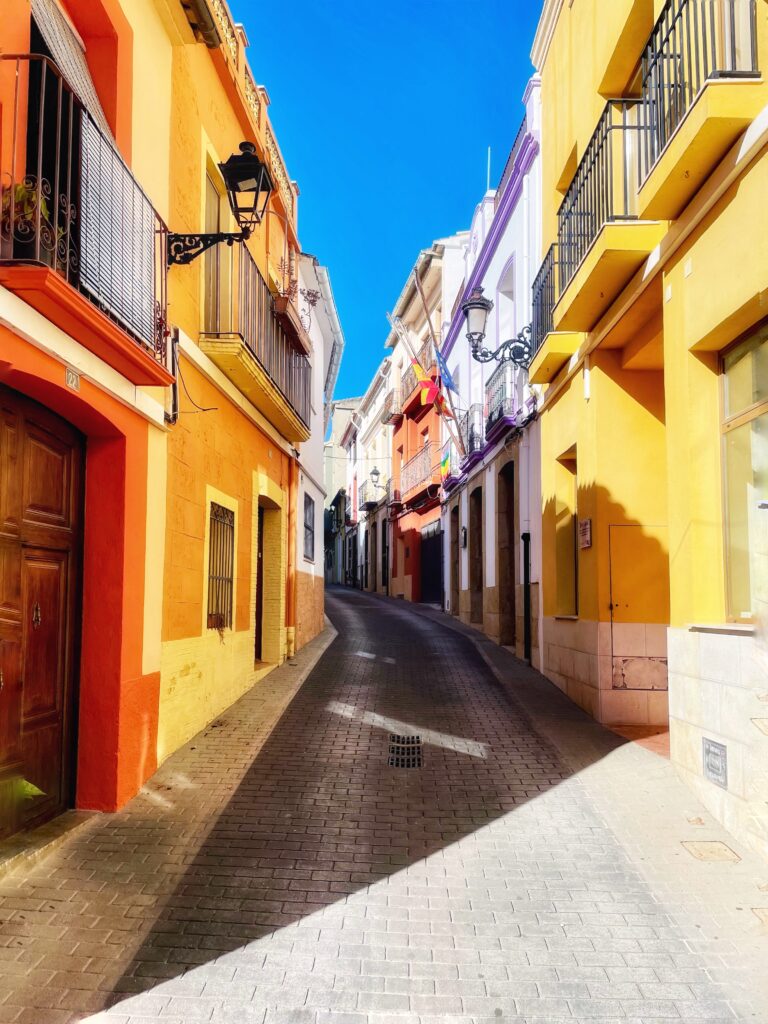
The Truth Behind Charming Inland Towns – Week 14
We’ve been exploring the hinterland of Alicante and Villajoyosa, visiting charming inland towns like Aspe, Novelda, Monóvar, and Agost. AI describes them as authentic and charming and these places sounded like hidden gems. The reality, however, often missed the mark. Our latest trip took us to Castalla, Ibi, and Tibi—again, seemingly promising towns described as offering an undiscovered, traditional Spanish lifestyle.
Tibi, in particular, drew us in with a house that looked very promising. We scheduled a viewing for Easter Sunday and set off, full of hope.
The drive up the A7 from Alicante was a breeze. Smooth motorway, hardly any traffic, and before we knew it, we were over 650 meters above sea level. That’s when it hit us—literally. The temperature dropped from 19°C to just 9°C. Thankfully, I had packed some winter woollies, which I needed!
Charming Inland Towns: Authentic but Uninspiring
We started in Castalla. Yes, it has a castle, an old town, and an authentic Spanish center with playgrounds, cafés, and parks. But it felt a bit faded—past its glory days. The surroundings were mostly service areas, large stores, and small industries. From the castle’s viewpoint, the industrial sprawl was unmistakable.


Next up was Ibi. Pleasant, but it took us ages to find the town center. I’m not sure if it’s us or the way Spanish inland towns are laid out, but we struggle to locate their “heart.” Sometimes it just feels like a grid of streets. We had a similar experience in Ontinyent—we never found the center at all.
Eventually, we stumbled upon Ibi’s older quarter, and it was better than we initially thought. AI descriptions weren’t completely off, but the town didn’t steal our hearts either. To be clear, we don’t want to live in a town—we’re looking for places nearby with appealing surroundings. This area, unfortunately, didn’t offer that. It felt too industrial, with open-air quarries and possibly some pollution.

The House in Tibi: Almost Perfect—Almost
The real reason for this trip was a house viewing in Tibi. The village itself is split by a valley, quaint but with not much going on. The house was located 8 km away, in an urbanización called Terol.
Now, who decides where to build these residential clusters in the middle of nowhere is beyond me. Terol had a popular restaurant, but the rest of it? Unsealed roads, no shops, no walking paths—just roads. It felt isolated. And in heavy rain? I imagine the roads turn into a mud pit.
We met the owners, who had come from Alicante with their whole family—perhaps to help with English, though we managed the visit mostly in Spanish. The house was lovely. Legal too—on terra urbana, which means no shady paperwork. This matters a lot. We’ve seen what happens otherwise. Once, we visited a house on terra rústica in Pedreguer where the owner told us to build a pool anyway and just pay the fine. That cowboy attitude might have worked in the past, but Spain is tightening its rules.

Back in Tibi, the house ticked nearly all our boxes. But my eyes kept drifting toward the opposite plot, fenced with a horrible green material. From our higher vantage point, I could see a hut, an outdoor kitchen, a wood chopping area, and people gathered with loud music and drinks. A casual hangout? Maybe. But if it becomes a weekend party zone, I didn’t want to be anywhere near it. A little voice inside me said: “Run!”
The Verdict: Lessons Learned
In the end, Castalla, Ibi, and Tibi may be charming inland towns and “authentic,” but they’re not for us. Too cold, too high—so we’ve now added a new rule: no towns above 250–300 meters altitude.
And those urbanizaciones in the middle of nowhere? Not really my favourite! I’d rather have a local shop, a café within walking distance, and actual walking trails—not just roads.
Key Takeaways
- Above 500 meters altitude brings colder weather
- Many towns are charming but lack vitality or community feeling.
- Don’t just judge the house—judge the neighborhood and nearby amenities.
- No shops, sealed roads, or walkability? Probably not worth the trade-off.
- Terra urbana versus terra rústica—avoid the fine-and-hope approach.
- If something feels off (like potential weekend party neighbors), listen to that gut feeling.
We’ve learned a lot from each viewing and visit. These experiences, even the less-than-perfect ones, guide us closer to what we truly want.
So, the search continues. Stay tuned!
Marijke




